The Human Eye and The Colourful World – Complete Guide For Class 10 Science Chapter 10
Welcome to iPrep, your Learning Super App. Our learning resources for the chapter, The Human Eye and The Colourful World in Science for Class 10th are designed to ensure that you grasp this concept with clarity and perfection. Whether studying for an upcoming exam or strengthening your concepts, our engaging animated videos, practice questions and notes offer you the best-integrated learning with interesting explanations and examples.
Welcome to a detailed exploration of the human eye and the vibrant world of colors! This blog will guide you through the intricate workings of the human eye, common vision defects, and fascinating phenomena like dispersion and scattering of light.
The Human Eye: An Overview
The human eye is a highly sensitive and valuable sense organ, functioning much like a camera. It acts as a natural optical instrument that allows us to perceive the world around us.
Parts of the Human Eye

Here’s a detailed look at the different parts of the human eye:
Part Description Cornea The transparent, bulging front part of the eye where light enters. Iris Regulates the amount of light entering the eye by adjusting the size of the pupil. Pupil The screen on which the image of an object is formed, consists of light-sensitive cells. Crystalline Lens A convex lens that focuses light rays onto the retina. Retina The gel-like substance fills the space between the lens and the retina. Ciliary Muscles Adjust the focal length of the eye lens by holding it in position. Optic Nerve Transmits the visual information from the retina to the brain in the form of electrical signals. Aqueous Humour The fluid between the eye lens and the cornea. Vitreous Humour The screen on which the image of an object is formed consists of light-sensitive cells. Blind Spot The area on the retina where the optic nerve connects lacks light-sensitive cells.
Functions of the Parts of the Human Eye
Cornea
The cornea is the eye’s front part, made of transparent tissue that bulges outward. It is responsible for letting light enter the human eye.
Pupil
The pupil controls the amount of light entering the human eye, adjusting its size to regulate light levels.
Iris
The iris surrounds the pupil and adjusts its size, thus controlling the light entering the eye.
Retina
The retina acts as a screen on which the image of an object is projected. It contains light-sensitive cells called rods and cones that help in detecting light and color.
Eye Lens
The human eye lens is a crystalline convex lens that focuses light rays on the retina, forming a real, inverted, and diminished image of the object.
Ciliary Muscles
These muscles hold the eye lens in place and adjust its focal length to focus on objects at different distances.
Optic Nerve
The optic nerve carries the image formed on the retina to the brain as electrical signals for processing.
Visual Phenomena
Persistence of Vision
This refers to the ability of the eye to retain an image for a short duration after the object has been removed, aiding in the perception of continuous motion.
Power of Accommodation
The power of accommodation is the eye’s ability to focus on both near and distant objects by adjusting the focal length of the eye lens.
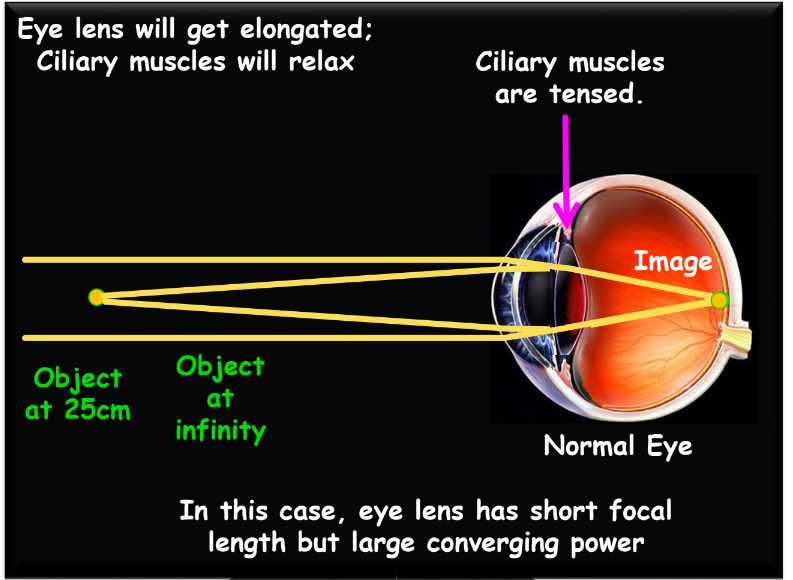
- Distant Object: The eye lens elongates and the ciliary muscles relax.
- Nearby Object: The eye lens becomes thicker and the ciliary muscles are tensed.
Near and Far Points
- Near Point: The closest distance at which the eye can see an object clearly, which is 25 cm for a normal eye.
- Far Point: The farthest distance at which the eye can see clearly, which is infinity for a normal eye.
Common Defects of Vision
Myopia (Near-Sightedness)
In myopia, distant objects appear blurry because the image is formed before the retina.
- Causes: High converging power of the eye lens or elongation of the eyeball.
- Correction: Corrected using a concave lens.
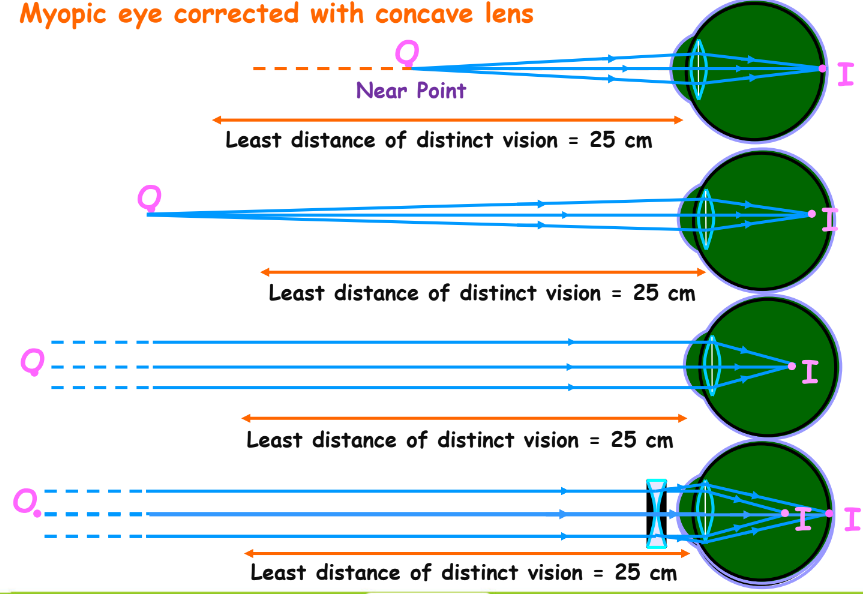
Hypermetropia (Far-Sightedness)
In hypermetropia, nearby objects appear blurry while distant objects are clear.
- Causes: Low converging power of the eye lens or shortening of the eyeball.
- Correction: Corrected using a convex lens.
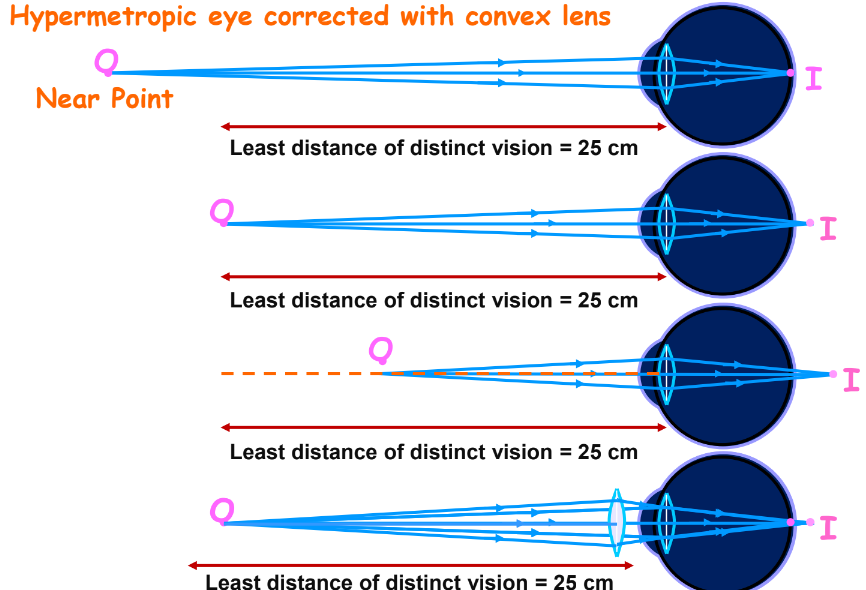
Presbyopia
Presbyopia is an age-related condition where the eye lens loses its flexibility, making it difficult to read or see up close.
- Causes: Weakening of ciliary muscles and reduced flexibility of the eye lens.
- Correction: Corrected with bifocal lenses.
Refraction and Dispersion of Light
Refraction Through a Prism
When light passes through a glass prism, it bends or refracts. The angles of incidence and refraction at different surfaces of the prism determine the path of the light.
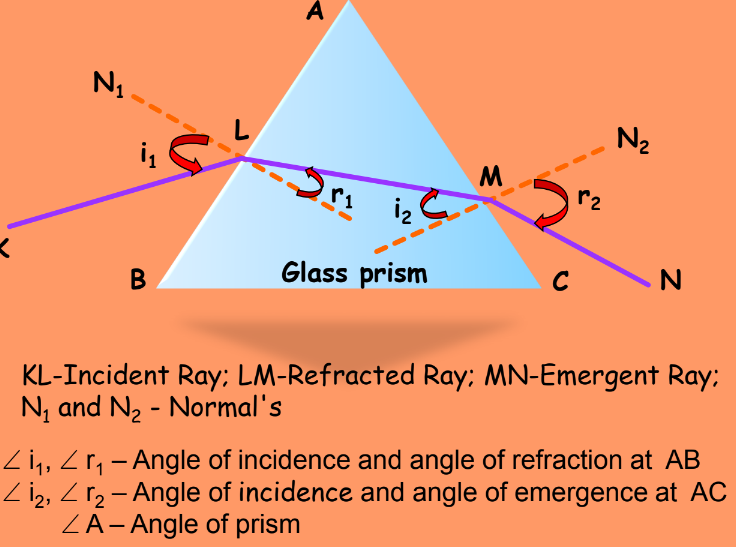
Dispersion of White Light
Dispersion occurs when white light splits into seven colors (VIBGYOR) upon passing through a prism, demonstrating that white light is a mixture of various colors.
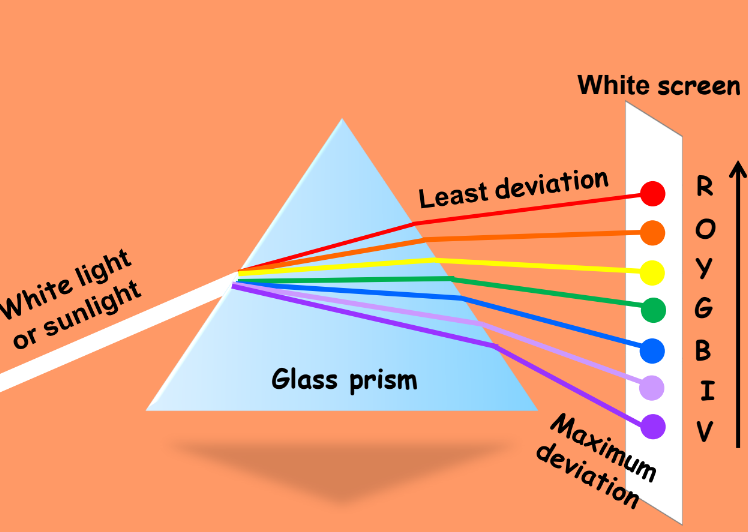
Cause of Dispersion
Different colors of light have different speeds in a medium, leading to varying degrees of refraction. Violet light deviates the most, and red light deviates the least.
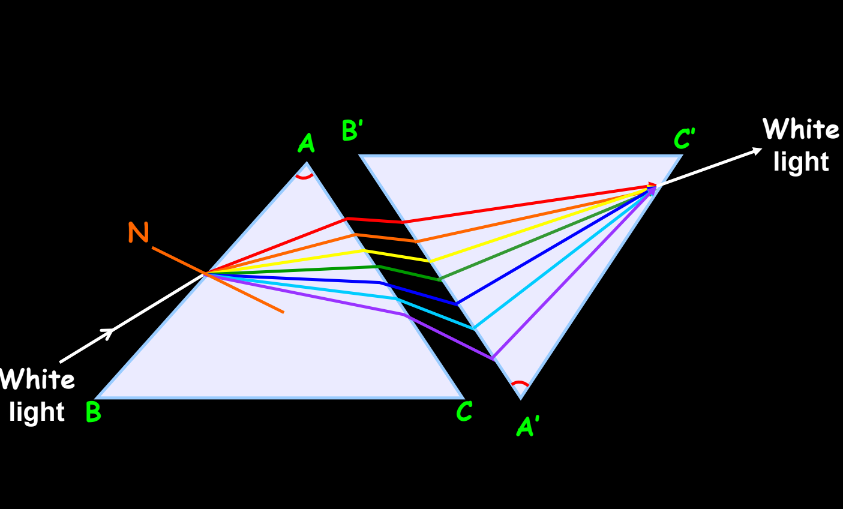
Natural Phenomena
Rainbow
A rainbow is formed when sunlight disperses in water droplets after rainfall. The dispersion of light within these droplets creates a spectrum of colors.
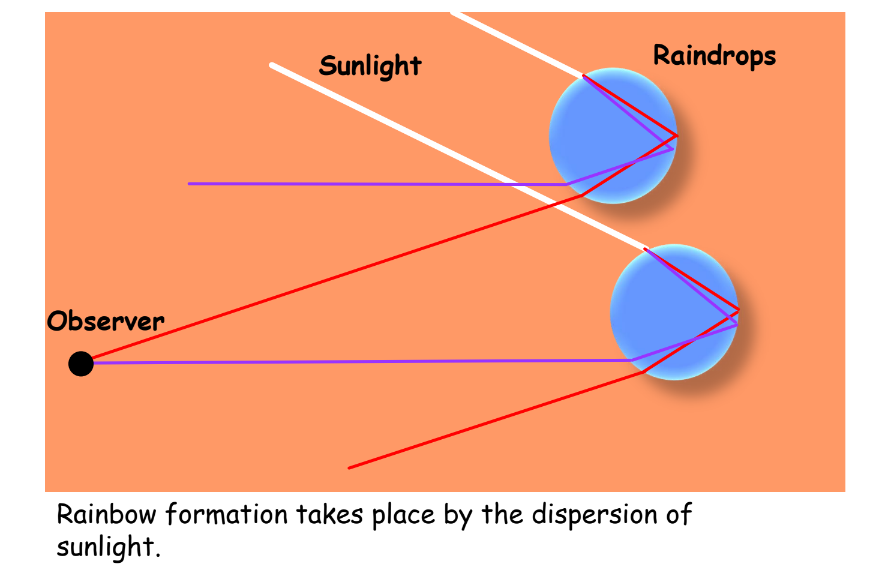
Atmospheric Refraction
Atmospheric refraction occurs due to the varying density of air layers in the atmosphere, affecting the path of light and causing phenomena such as the twinkling of stars and the apparent advance of sunlight.
Twinkling of Stars
Stars twinkle due to the varying degrees of refraction caused by the Earth’s atmosphere.
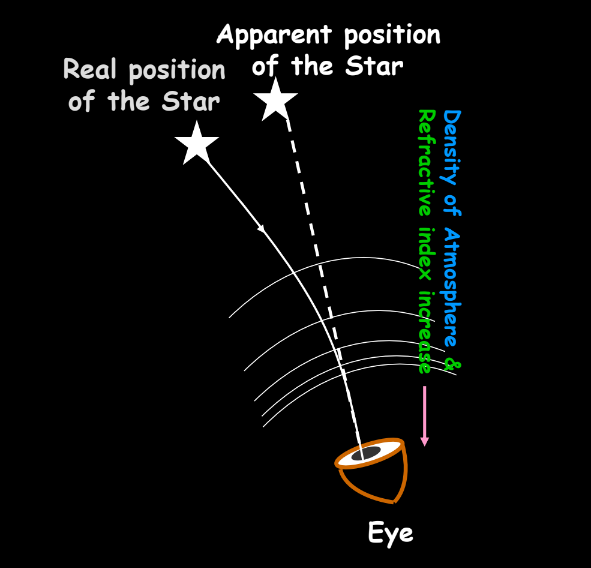
Advance Sunlight and Delayed Sunset
Due to atmospheric refraction, the sun appears slightly before the actual sunrise and after the actual sunset.
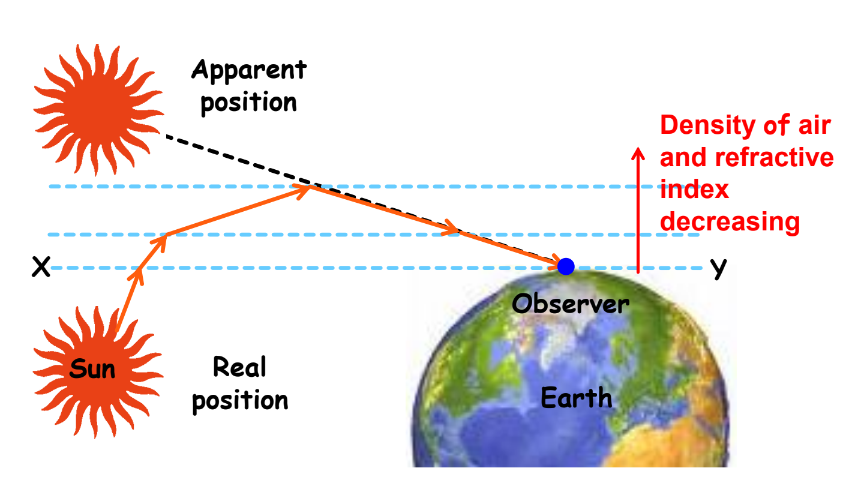
Scattering of Light
Scattering causes the sky to appear blue and the sun to look reddish at sunrise and sunset. This happens because shorter wavelengths of light (blue) are scattered more than longer wavelengths (red).
Color of the Sky
- Atmospheric molecules and fine particles have a size smaller than the wavelength of the visible light.
- When sunlight passes through the atmosphere, fine particles in the air scatter the blue color more strongly than the red color.
- Scattered blue light enters our eyes and the sky appears blue.
Colour of the Sun at sunrise and sunset
Sun appears reddish at sunrise and sunset due to the scattering of light.
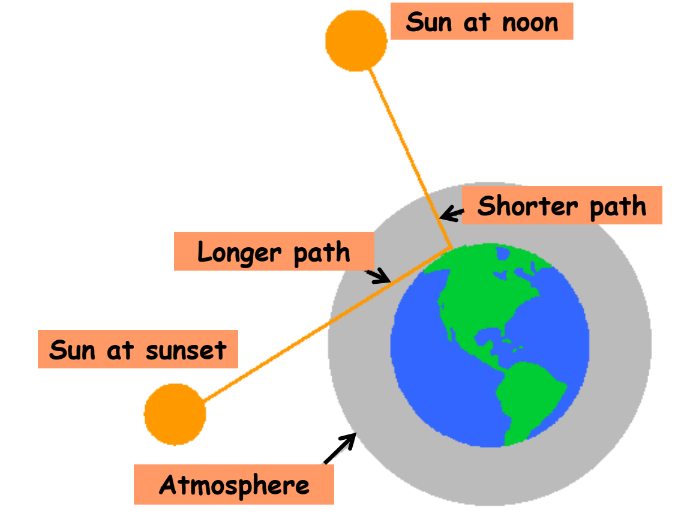
- The light that reaches our eyes is of a longer wavelength, i.e., red color.
- Light of a shorter wavelength gets scattered away. This gives rise to the reddish appearance of the sun at sunrise and sunset.
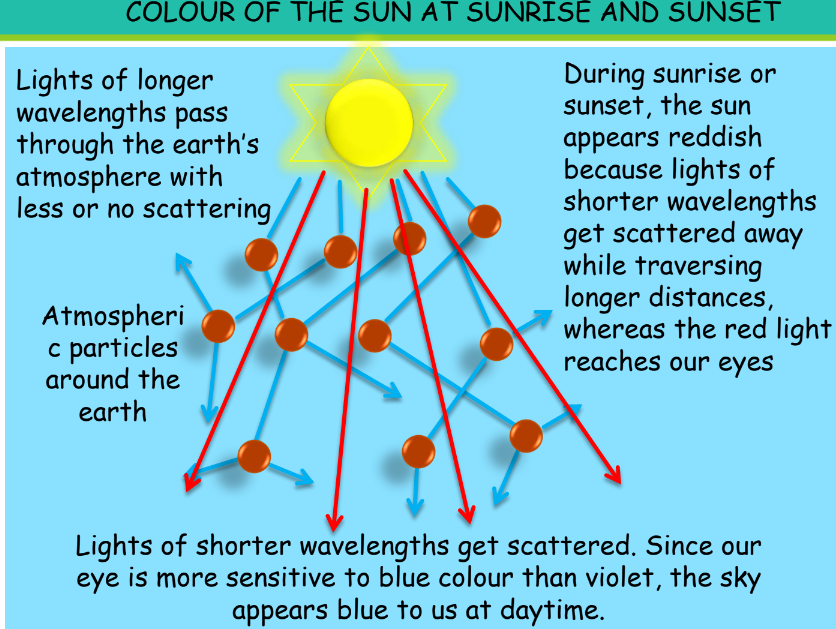

Danger signal lights and sign boards
- Danger signal lights and signboards are red.
- Red light is least scattered by fog or smoke.
- It can be seen even at large distances.
Tyndall Effect
The Tyndall Effect is the scattering of light by colloidal particles, making the particles visible in a beam of light.
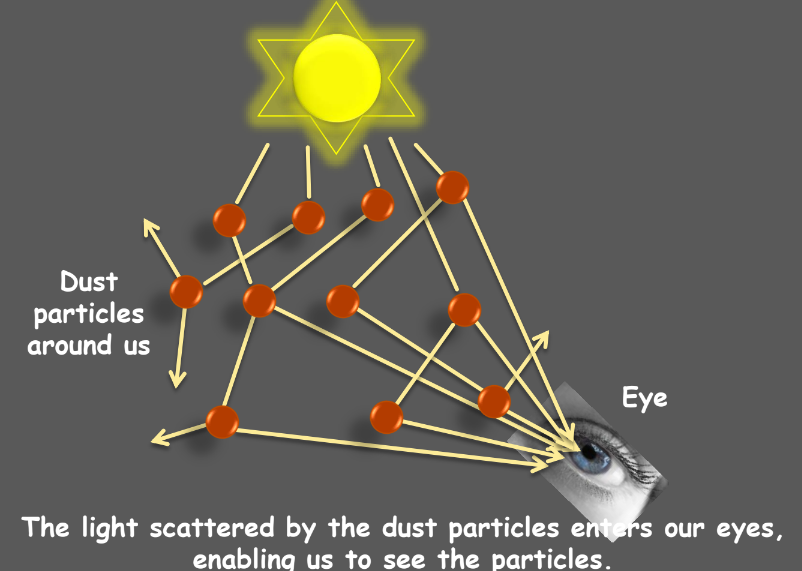
Quick Recap
Here is a quick recap of the chapter The Human Eye and The Colourful World-
- Power of Accommodation: Adjusts the focal length of the eye lens to see both near and distant objects.
- Least Distance of Distinct Vision: 25 cm for a normal eye.
- Cornea: The transparent front part of the eye.
- Iris: Regulates the amount of light entering the eye.
- Pupil: The opening in the iris through which light enters.
- Aqueous Humour: Fluid between the cornea and the lens.
- Eye Lens: Converges light onto the retina to form an image.
- Ciliary Muscles: Adjust the lens’s focal length.
- Retina: The light-sensitive layer where the image is formed.
- Dispersion: Splitting of white light into colors.
- Scattering: Causes the blue color of the sky and reddish sun at sunrise and sunset.
Understanding these concepts will help you appreciate the complex mechanisms behind vision and the colorful world we experience daily!
Let’s Conclude
In conclusion, understanding the chapter “The Human Eye and The Colourful World” is essential for grasping the fascinating science behind how we see and perceive colors. From the intricate workings of the human eye to the natural phenomena of light dispersion and scattering, this chapter from CBSE class 10 science, offers a comprehensive view of both biological and physical processes. Whether it’s learning about common vision defects or exploring atmospheric refraction, “The Human Eye and The Colourful World” provides a deep insight into everyday experiences. With iPrep’s engaging resources, you can master the concepts of “The Human Eye and The Colourful World” and enhance your understanding for academic success.
Practice questions on Chapter 10 - The Human Eye and The Colourful World
Get your free Chapter 10 - The Human Eye and The Colourful World practice quiz of 20+ questions & detailed solutions
Practice Now








